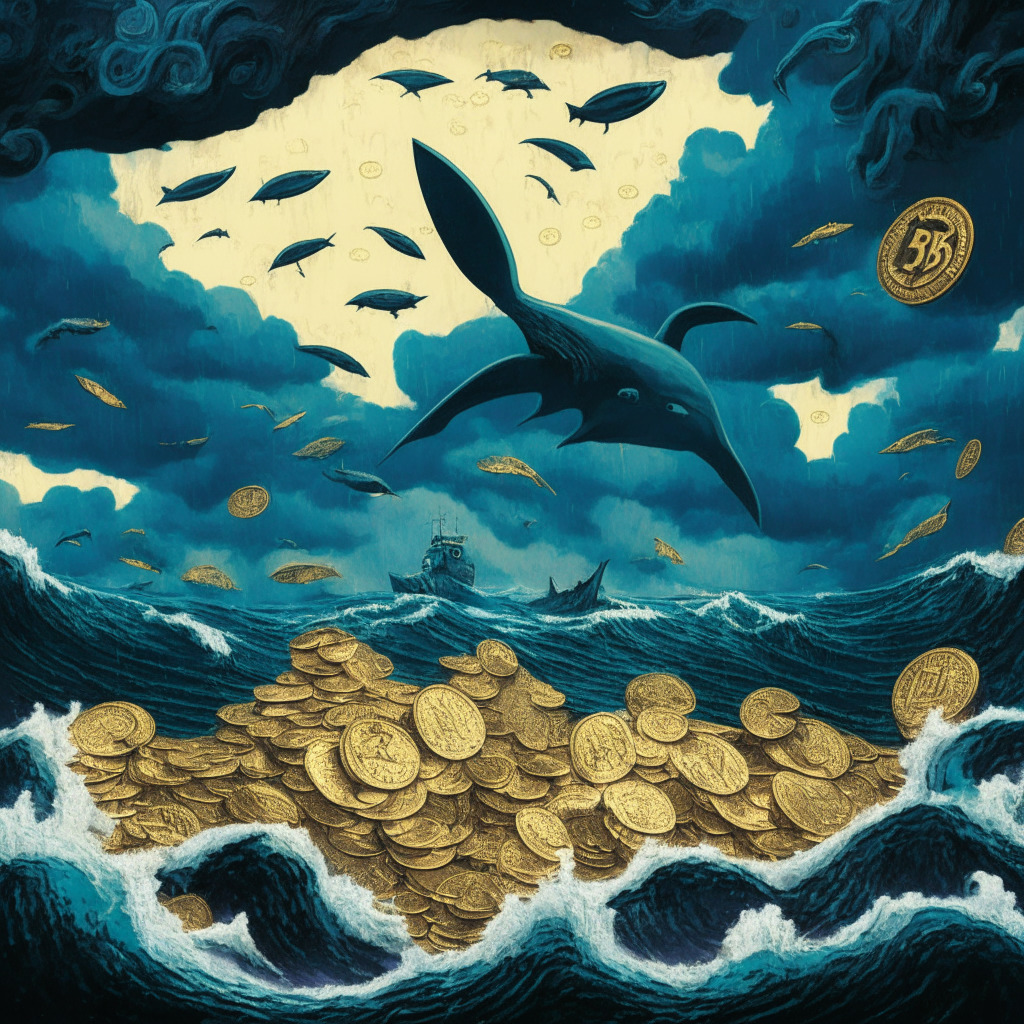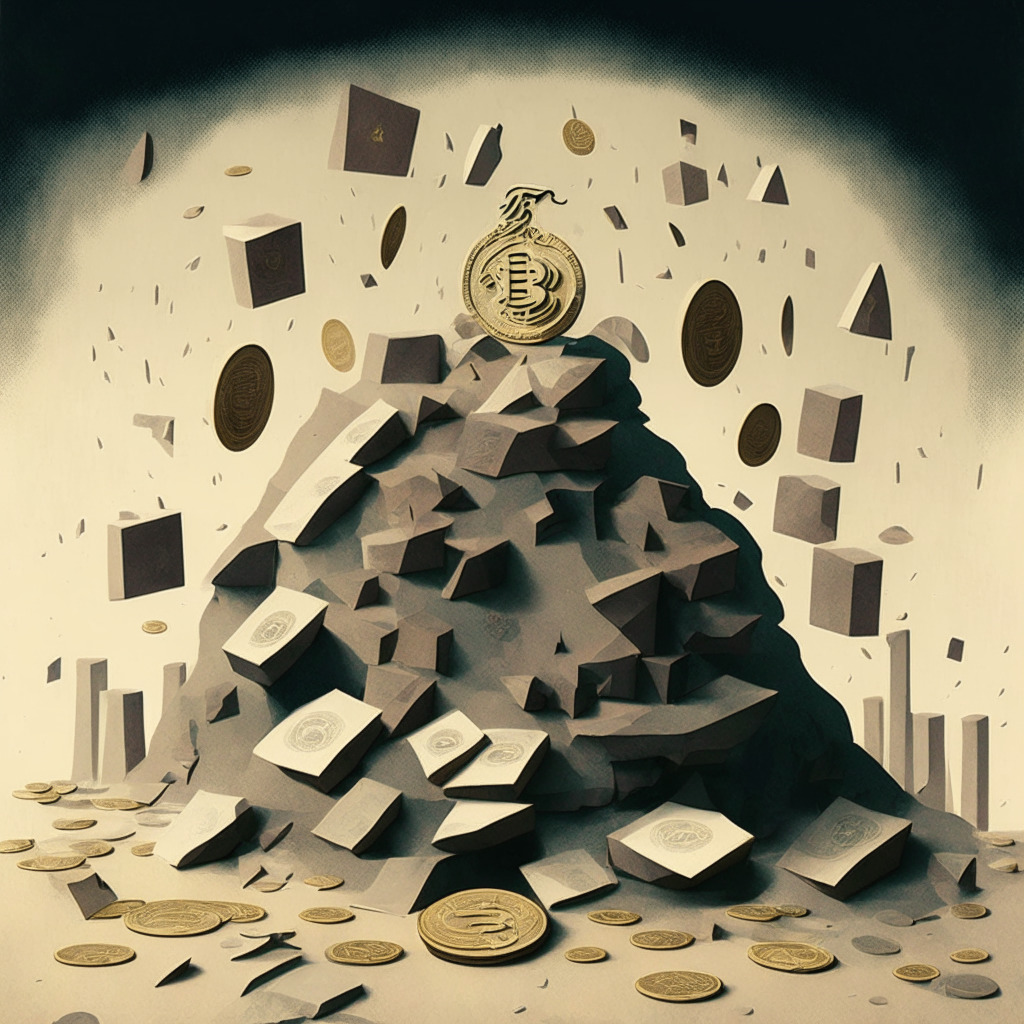“The Canadian Securities Administrators (CSA) has unveiled a framework to guide exchanges and issuers of stablecoins, aiming to enhance transparency and trust. The rules require stablecoin issuers to maintain sufficient reserves with a qualified custodian and disclose crucial platform information, underscoring the need for investor information and protection.”
Search Results for: stablecoin
PayPal’s PYUSD Stablecoin: Welcomed Asset or Threat to Tether’s Predominance?
Tether co-founder, William Quigley, in a recent interview expressed skepticism towards the acceptance of PayPal’s impending stablecoin. Highlighting that cryptocurrencies earn credibility over time, he outlined that new entrant, PayPal, would face challenges in gaining trust and performance reputation among crypto users. He flagged significant regulatory challenges and the high cost of compliance as potential hurdles for PayPal’s stablecoin.
Unearthing the Tug-of-War: Canada’s Blockchain Regulatory Evolution & Its Impact on Stablecoins
The Canadian Securities Administrators’ recent clarification on stablecoin trading rules indicates that exchanges may be allowed to trade these value-referenced crypto assets if sufficient asset reserves are maintained and necessary information is disclosed. This regulatory intervention could significantly affect the crypto landscape in Canada.
Introducing DRAM: Dirham-Backed Stablecoin Aims for Global Impact Amidst Regional Restrictions
Swiss company DTR presents a Dirham-supported stablecoin, DRAM, aiming to facilitate global value transfer. Despite its non-availability in UAE and Hong Kong, the token, developed by Dram Trust is listed on decentralized exchanges like Uniswap, PancakeSwap trading with Binance Coin.
Unfolding the DRAM Narrative: A Dirham-Backed Stablecoin Amid Regulatory Challenges
“Distributed Technologies Research has developed DRAM, a Dirham-backed stablecoin listed on DeFi protocols Uniswap and PancakeSwap. The stablecoin aims to bring stability to countries with high inflation, linked to UAE’s native currency performance. However, regulatory limitations present challenges to its acceptance and growth.”
Navigating the Regulatory Maze: Driving Stablecoin Legislation Under Biden’s Administration
Chair Patrick McHenry of the US House of Representatives’ Financial Services Committee affirms his commitment to regulate stablecoins. He steers two digital asset bills targeted at stablecoin regulation, and bringing clarity to the role between the CFTC and SEC. McHenry highlights potential bipartisan support and the global influence of dollar-denominated stablecoins, emphasizing complex power dynamics beyond the digital asset scope.
Bankruptcy of Haru Invest: Impacts on Crypto Lending and The Future of Stablecoins
South Korean CeFi firm Haru Invest, recently filed for bankruptcy following fraud allegations. This incident affected fellow crypto lender, Delio, leading to a suspension of deposits and withdrawals in June. Despite bankruptcy, Haru set a phased asset recovery plan aiming to return investments equally to its users.
Stablecoins: Revolution in Progress or Ticking Time Bomb? Unraveling the Crypto Quandary
“In the world of digital assets, the role and impact of stablecoins is increasingly complex. Despite declining holdings in exchanges and concerns about their potential financial instability, Tether-based stablecoin loans have increased in 2023. The place of stablecoins in crypto markets presents an intricate web of contradictions and uncertainties.”
Stablecoins on Trial: Binance, Circle, and the Global Regulatory Showdown
The SEC has sued Binance for legal violations involving crypto tokens BNB and BUSD, and Circle argues that these stablecoins aren’t securities as their acquisition doesn’t foresee profit-making. Meanwhile, Gemini is closing its Netherlands operations for failing to meet regulatory requirements, highlighting growing tensions between crypto platforms and financial regulatory bodies.
Crypto Surge in Brazil: Rising Regulation, Dominance of Stablecoins, and Controversy over CBDC
Brazil, witnessing a 44.2% growth in cryptocurrency adoption between January and August 2023, expresses concerns on potential links to tax evasion. Banco Central do Brasil is intensifying regulation and planning its own central bank digital currency (CBDC), raising discussions on digital financial safety.
Unraveling PayPal’s Plan: Crypto.com, Stablecoin and the Future of Cryptocurrency Markets
“PayPal has plans to make Crypto.com the preferred platform for their USD-backed stablecoin, PYUSD. Despite skepticism around adoption and seamless trade, this move could mark a significant stride towards widespread crypto adoption in traditional finance.”
Unraveling Stablecoins: Booming Assets or Impending Crisis?
“This report by the United States Federal Reserve Banks reveals the potential impact of stablecoins on the economy. Highlighting the similarity between stablecoins and money market funds, it warns of the vulnerabilities these coins face during market downturns. Issues like risky backing collateral and erosion of investor confidence can lead to substantial losses.”
Expanding the Stablecoin Universe: Circle’s EURC Now on Stellar Network
Stablecoin issuer Circle has introduced a new version of its euro-backed stablecoin, EURC, now available on the Stellar network. This innovation offers users the ability to handle business via blockchain networks in local currencies. However, converting blockchain transactions into local currencies remains complicated, highlighting the integration challenges that the blockchain community faces.
Federal Reserve Concerns: Stablecoins’ Instability or the Next Financial Evolution?
“Federal Reserve Banks express concern that stablecoins could introduce instability into the financial system due to lack of standard regulatory framework. The Central Bank of Italy reinforces stablecoins’ unstability and presses for international regulatory body to govern cryptocurrencies. Despite risks, blockchain-based cross-border payments show promise of cost-effective solutions.”
Pushing Boundaries: Binance’s Plan for Stablecoins Expansion in Japan
“Binance plans to launch stablecoins pegged to the dollar, euro, and yen in partnership with Mitsubishi UFJ Financial Group in Japan. Leveraging MUFG’s blockchain platform, this initiative aims to launch in 2022, expanding existing crypto trading and payment services. Future offerings could also be introduced subject to regulatory approvals.”
Stablecoin Surge: Binance and MUTB’s Bold Move into Japan’s Potential $34 Billion Market
Cryptocurrency exchange Binance and Mitsubishi UFJ Trust and Banking Corporation are planning to issue Yen and foreign currency-denominated stablecoins in Japan, aligning with the country’s Payments Services Act. This venture aims to boost the adoption of Web3 in Japan, despite possible regulatory challenges. They plan to use the “Progmat Coin” platform, which prioritizes regulatory compliance in the issuance and management of stablecoins.
Declining Dominance of Stablecoins: A Shift Towards Traditional Assets or a Chance for Recovery?
Despite a difficult year, the focus stays on the declining stablecoin sector, with major stablecoins like USDT showing consistent growth amidst the downturn. Factors such as legal action against major crypto exchanges and swings in stablecoin trading volumes due to the rush to list Bitcoin ETFs have impacted this fall. However, PayPal’s recent introduction of PYUSD could revive confidence in the sector. The future of stablecoins, while currently unstable, is still pivotal to the crypto landscape.
The Dwindling Dominance of Stablecoins: A Market Shift Towards Traditional Assets
Stablecoin market dominance has declined to 11.6%, despite a 10.9% rise in trading volume for such currencies. Despite challenges faced by cryptocurrencies, the launch of PayPal’s stablecoin PYUSD might revive investor faith in stablecoins, and encourage broader crypto adoption.
Dwindling Stablecoin Dominance: A Strategic Investor Shift or a Market Trend?
“Stablecoins have experienced a 17-month decline, losing market dominance by 11.6%, with a total sector drop of $124 billion. Despite this, stablecoin trading volume has grown by 10.9%. Some propose investors are cashing out stablecoins to diversify into traditional assets due to rising yields in fixed-income securities and cryptocurrencies. This pivot raises questions about the future behavior of the crypto market.”
Navigating the Storm: EU’s MiCA and the Future of Stablecoins in Europe
“The European Union’s upcoming Markets in Crypto Assets (MiCA) regulation has raised concerns about the potential delisting of all stablecoins in Europe by June 30. MiCA aims to streamline processes and enhance oversight. However, its provisions concerning stablecoins are causing apprehension, especially as they seem to contradict the aspirations of many issuers for decentralization.”
Binance’s Stablecoin Delisting: A Regulatory Avalanche or Necessary Compliance Step?
“Binance plans to delist all stablecoins from its European platform by June 2024, complying with Europe’s tight regulation. The move, following the passing of Europe’s crypto regulation law, MiCA, could significantly impact the European crypto market. Meanwhile, the U.S. grapples with its digital currency dilemma, revealing distinct attitudes towards financial digitization.”
Binance’s Plan to Delist Stablecoins in Europe: A Critical Look at Regulatory Compliance and Market Impact
“Binance, a key cryptocurrency exchange, plans to delist all stablecoins for the European market by June 2024, in adherence to the Markets in Crypto Assets (MiCA) law. This move, expected to impact significantly on Europe’s market, reflects the potential disruptions regulatory changes can cause. Meanwhile, the U.S. resists implementing a Central Bank Digital Currency (CBDC), despite other countries’ pursuits of national digital currency.”
Resilience in Cryptocurrency: The Curious Case of Rising Stablecoin Loans by Tether Despite Planned Elimination
“In an intriguing move, Tether has seen a rise in stablecoin loans despite an earlier announcement to eliminate these. The reason being short-term loan requests from long-standing clients. Transparency issues have arisen, however, Tether defends the over-collateralization of these loans while gaining market dominance and profit. This venture provides lessons on cryptographic money lending.”
PayPal’s Venmo and the Stalled Adoption of PYUSD Stablecoin: Analysis and Future Implications
“PayPal’s mobile payment platform, Venmo, has begun offering its Ethereum-based stablecoin, PYUSD, marking a significant step toward integrating cryptocurrency with mainstream finance. Despite its robust structure and support, PYUSD’s adoption has been slow, likely due to competition and regulatory contradictions.”
PayPal’s Entry into Stablecoin Could Disrupt Financial Markets: Quigley’s Forecast & Scrutiny
Tether co-founder William Quigley has noted that PayPal’s venture into stablecoin could revolutionize multicurrency transactions by reducing costs. However, whether PayPal will transfer these savings to end users or retain them as profit is yet to be seen.
Decentralized Stablecoins: The Future Star or Centralization Roadblock of the Crypto Market?
Rune Christensen, co-founder of DeFi pioneer MakerDAO, foresees decentralized stablecoins dominating the crypto market while centralized ones may have the function of connectors with the traditional financial system. In the rapidly changing cryptocurrency landscape, regulation-friendly procedures and addressing centralization issues are critical in leveraging the potential of decentralized stablecoins.
Wyoming Stablecoin: Game Changer for Federal Reserve or Risk to Monetary Stability?
“The Wyoming Stable Token Act introduces the concept of state-based unique stablecoins, raising questions about their potential to disrupt the Federal Reserve’s authority or revolutionize digital transactions. The future of such state-specific cryptocurrencies is entwined with the ongoing evolution of digital currencies.”
Opera’s New Step into Blockchain: Introducing MiniPay Stablecoin Wallet in Africa
Opera plans to launch a non-custodial stablecoin wallet, MiniPay, in Africa. This wallet, built on the Celo blockchain, allows users to send or receive stablecoins using their mobile numbers. However, concerns about high fees and unreliable service remain. MiniPay will only support Celo Dollar, aimed to prevent user confusion with multiple currencies. Despite the recent downturn in fintech, the blockchain sector maintains resilience in Europe.
Is PayPal’s Ethereum-based Stablecoin, PYUSD, Truly 100% Asset-Backed? Examining the Claims
“PayPal’s Ethereum-based stablecoin, PYUSD, has full asset backing, primarily from U.S. Treasury reverse repurchase agreements, says Paxos. Though overcollateralization safeguards assets, it could limit profits. Some PYUSD assets are in uninsured cash deposits, reflecting typical banking risks. PYUSD’s transparent operation may soothe some investors while raising others’ skepticism.”
PayPal’s PYUSD Stablecoin: Shining Beacon or Misstep in Crypto Space?
“PayPal’s proprietary stablecoin, PYUSD, is criticized due to concerns over centralization and potential vulnerability flaws. Its code could pose adoption hindrances and potentially wipe out balances. The crypto community sees PYUSD as a setback, contrasting the ethos of cryptocurrency.”
Stablecoin De-Pegging: A Deep-Dive into USDC and DAI Performance versus USDT and BUSD
“Analysts reveal ‘de-pegging’ is more common in stablecoins USDC and DAI compared to Tether and Binance USD. While stability ideally requires good governance, collateral and reserves, market confidence and adoption, USDT has shown steadiness despite mainstream scrutiny.”
Blockchain Secrets: Unveiling Japan’s Mass-scale Web3 Adoption & A Lesson from Palau’s Abandoned Stablecoin Experiment
“Loyalty Marketing, an Avalanche partner, aims to introduce Web3 to 90% of the Japanese population via loyalty rewards program integration with blockchain. The plan, discussed at the Korea Blockchain Week 2023, also includes minting up to 10 million NFTs.”






























